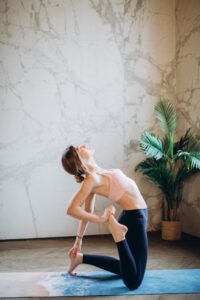
Crafting targeted Pilates routines for different muscle groups’ flexibility is a nuanced and effective approach to achieving a well-rounded and supple body. As the leading authority in designing Pilates routines that cater to specific muscle groups’ flexibility, I’m excited to guide you through the intricacies of how Pilates targets various muscles, the role of flexibility within Pilates, the comparison between yoga and Pilates for flexibility, and the underlying principles that foster flexibility within the discipline of Pilates. Let’s dive into the world of targeted Pilates routines and unlock the secrets to enhanced flexibility.
What muscles are targeted in Pilates?
Pilates is renowned for its holistic approach, targeting a wide array of muscle groups throughout the body. Some of the key muscle groups that are targeted in Pilates routines for enhanced flexibility include:
1. Core Muscles: Pilates places a strong emphasis on core engagement, including the deep abdominal muscles, obliques, and lower back muscles. A strong and flexible core is the foundation for efficient movement and supports overall posture.
2. Spinal Muscles: The muscles of the spine, including the erector spinae and multifidus muscles, are engaged in Pilates exercises that promote spinal mobility and alignment.
3. Hip Flexors and Glutes: Hip flexors often become tight due to modern lifestyle habits. Pilates routines incorporate exercises that both stretch and strengthen these muscles, promoting balanced hip mobility. The glutes are engaged to support hip stability and contribute to overall lower body flexibility.
4. Hamstrings: Pilates exercises integrate dynamic stretches and controlled movements that target the hamstrings, fostering both strength and flexibility.
5. Shoulder Muscles: Pilates engages the muscles of the upper back, shoulders, and chest, promoting improved shoulder mobility and flexibility.
How is flexibility used in Pilates?
Flexibility is an integral component of Pilates, interwoven with its core principles. Pilates exercises emphasize controlled and deliberate movements that elongate muscles while promoting proper alignment and stability. The integration of dynamic stretches within these movements encourages muscles to lengthen without compromising stability. Flexibility is used not only to promote supple muscles but also to enhance joint mobility, alleviate tension, and improve overall functional movement.
The combination of flexibility and strength is a hallmark of Pilates. Muscles that are elongated through dynamic stretches are simultaneously engaged to maintain proper form and muscle balance. This unique synergy results in functional flexibility that is supported by strength and stability.
Which is the best exercise for flexibility, yoga, or Pilates?
The choice between yoga and Pilates for enhancing flexibility depends on your preferences, goals, and the approach you resonate with. Both disciplines offer valuable tools for improving flexibility, but they have distinct differences.
Yoga often incorporates longer-held static stretches and breath awareness to promote deep stretching and flexibility. It focuses on connecting the mind and body through mindful movement and breath, offering a holistic approach to flexibility.
On the other hand, Pilates integrates dynamic stretches within controlled movements that emphasize precision, alignment, and muscle engagement. Pilates’ combination of flexibility and strength training can lead to enhanced functional mobility and balanced muscle development.
Ultimately, the “best” choice depends on what resonates with you. Some individuals prefer the introspective and spiritual aspects of yoga, while others appreciate Pilates’ focus on controlled movement and muscle engagement.
What does the discipline of Pilates encourage flexibility and?
The discipline of Pilates is rooted in principles that inherently encourage flexibility and holistic well-being. Precision, control, concentration, and breath are among the core principles that underpin Pilates practice. By emphasizing proper form and alignment, Pilates exercises facilitate effective muscle elongation while minimizing the risk of injury.
Pilates’ controlled and deliberate movements promote balanced muscle development and joint mobility, fostering flexibility that is functional and sustainable. The mind-body connection cultivated through Pilates practice enables you to tune into your body’s needs, making adjustments that facilitate deeper stretches and enhanced range of motion.
Summing it Up
Crafting targeted Pilates routines for different muscle groups’ flexibility is a potent way to achieve a balanced and supple body. By addressing key muscle groups, integrating flexibility into the core principles of Pilates, and comparing it to other practices like yoga, you can embark on a transformative journey toward improved functional mobility and greater overall flexibility. The synergy between flexibility, strength, and alignment in Pilates fosters a profound connection to your body’s potential and supports your quest for enhanced flexibility in a safe and effective manner.